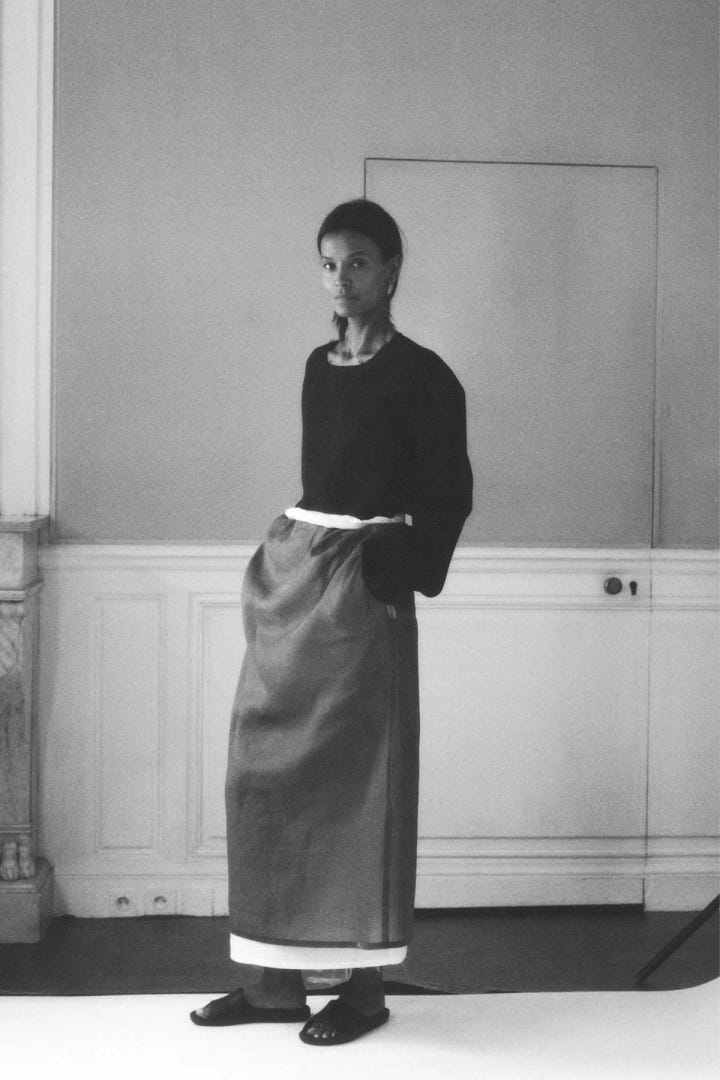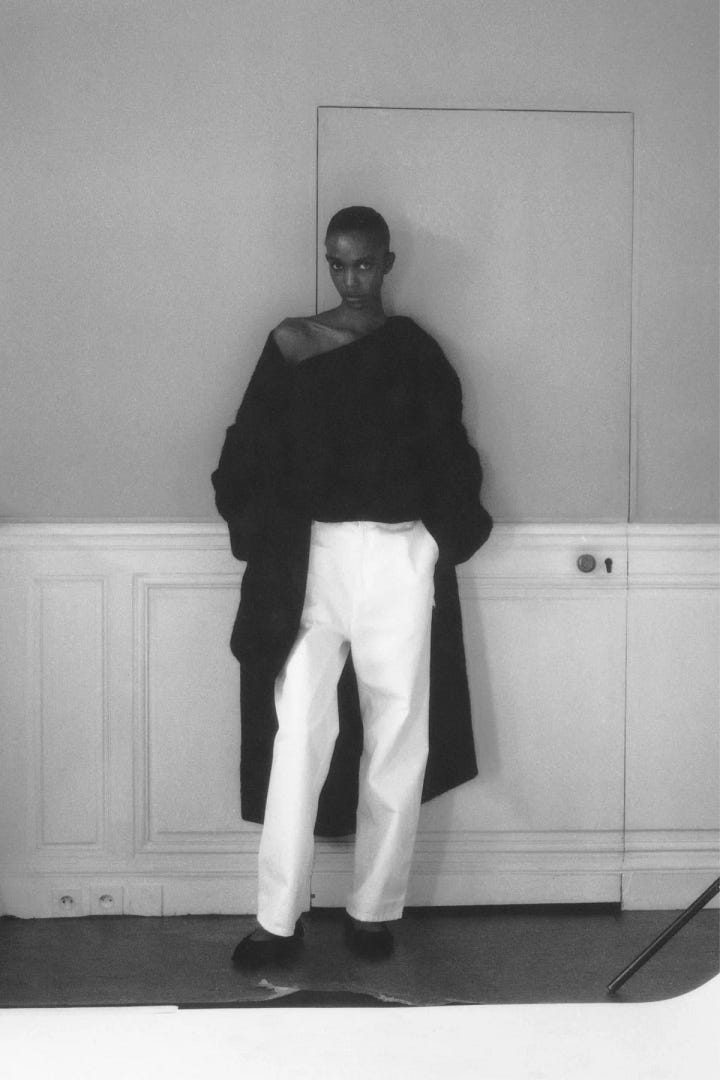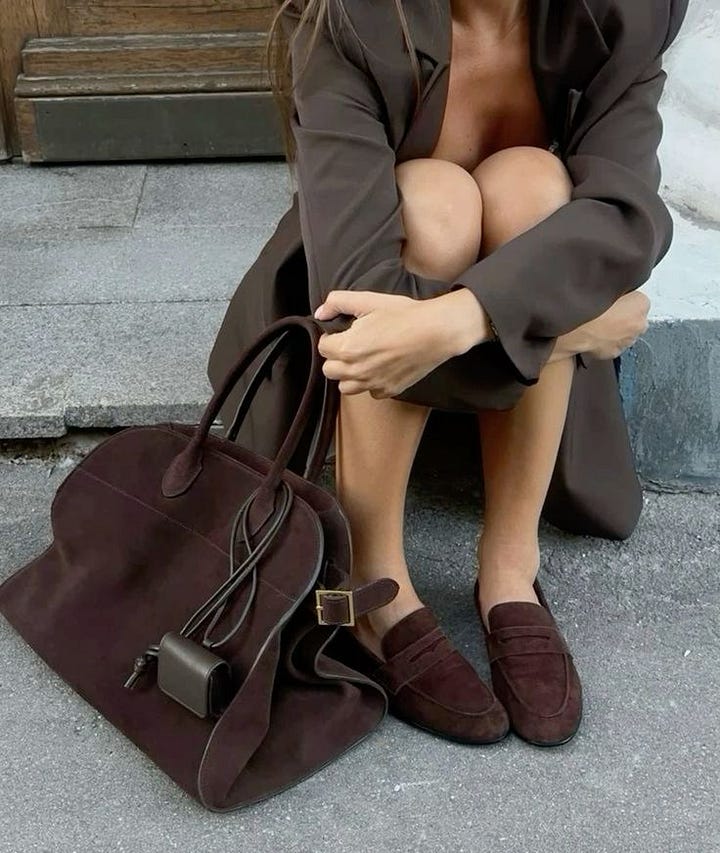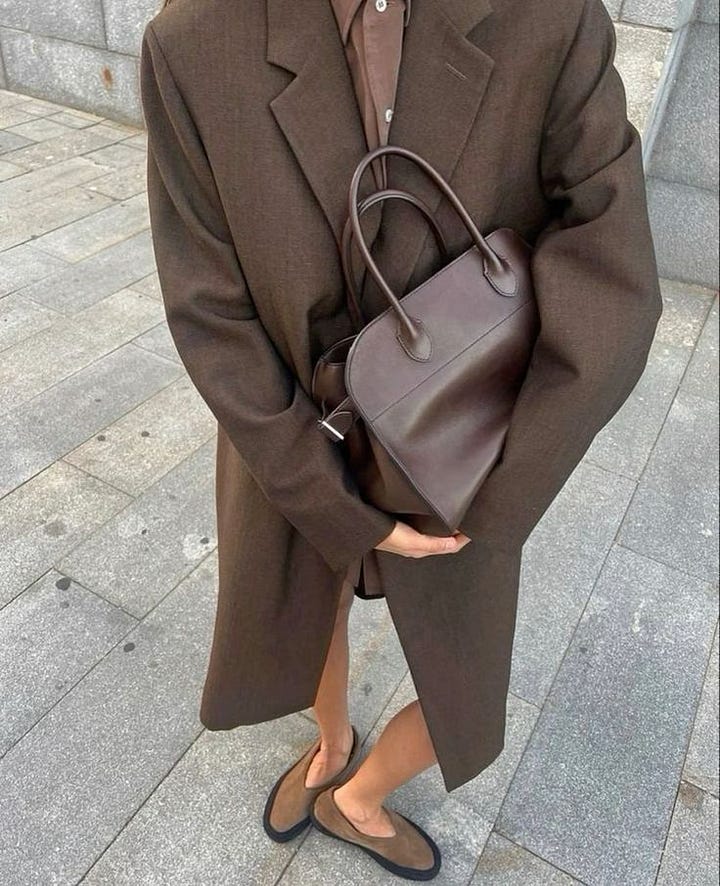iced vanilla #4: a case study of The Row and its silent revolution
exploring the quiet power behind the luxury's newest icon
with a valuation nearing $1 billion, The Row isn’t just another luxury brand - it’s a phenomenon. in a world where luxury often means logos, campaigns and constant social media buzz, The Row was rooted in minimalism and exclusivity. it exemplifies how a brand can achieve monumental success by speaking softly and letting its craftsmanship do the talking.
from its beginnings as a passion project by Mary Kate and Ashley Olsen to becoming a global symbol of “quiet luxury,” The Row challenges every conventional wisdom about what it takes to succeed in the modern luxury market. how does a brand with like this thrive in today’s hyperconnected world? what makes a brand truly valuable? how does innovation manifest in subtlety?
I want to cover in this iced vanilla #4 newsletter the ability to create this culture capital, product design, strategic expansion and the movement redefining the future of luxury.
the story behind
the journey of The Row began in 2006 with a simple yet ambitious mission: to create the perfect T-shirt. Mary Kate and Ashley Olsen didn’t want to leverage their celebrity status; instead, they chose to focus on the quality and design, letting the products speak for themselves.
the brand’s name “The Row” refers to London’s historic Savile Row, best known for its tailoring shops. this connection underscores The Row’s commitment to craftsmanship, precision, and timeless style - values that resonate throughout its collections and have become the identity of the brand.


the excellence
The Row embodied a quiet elegance over loud spectacle. the design is rooted in neutral tones, clean lines and impeccable tailoring. the Olsens made pieces that would transcend seasonal shifts and provide a sense of effortless sophistication.
the brand is set to enter a new phase of growth. the investment received from Chanel and L’Oreal owners signals confidence in the brand’s future, with plans to expand its reach further into global markets.
according to Bloomberg, the family behind Chanel, specifically the Wertheimer brothers, have bought a minority stake in The Row through their family office Mousse Partners and L’Oréal heiress Francoise Bettencourt Meyers invests through her family vehicle, Tethys Invest. fashion entrepreneur Natalie Massenet, who is the former executive chairman of Net-a-Porter, is also slated to invest in the label through her company Imaginary Ventures with Nick Brown. the Olsen sisters will still remain as The Row’s majority shareholders but this investment is expected to bring the valuation of the company up to $1 billion USD.
products, pricing and sales channels
at the heart of The Row’s success lies its curated product line, its pricing strategy and its chosen sales channels - all of which embody the principles of exclusivity. Kapferer emphasizes that exclusivity lies at the heart of luxury, driving its allure by fostering a sense of rarity and singularity.
products
the product range includes ready-to-wear collections, bags, shoes and accessories. one of The Row’s most viral and iconic items is the Margeaux Bag. its known for its clean lines and sophisticated design, the Margeaux has become a must-have among fashion insiders and celebrities alike. crafted from soft leather and available in a variety of understated colors, this bag is celebrated for its versatility and timeless appeal. it embodies The Row's commitment to minimalism, offering a sleek, functional accessory that pairs effortlessly with both casual and formal outfits.


pricing
the pricing strategy reflects its commitment to exclusivity. with coats priced upwards of $5,000 and handbags often exceeding $3,000, the brand positions itself firmly in the ultra-luxury market. these price points are not merely reflective of material and craftsmanship but also signal the brand’s status as a marker of cultural and economic capital.
with ultra-high price points, luxe fabrication and a logo-free aesthetic, The Row has steadily emerged as America’s answer to Loro Piana — selling, for example, cashmere coats handmade in Italy, for $6250. garments are designed with a contemporary edge that takes cues from Phoebe Philo-era Celine and Martin Margiela-era Hermès.
Kapferer’s theory of exclusivity is evident here, as The Row leverages high prices to maintain its aura of inaccessibility, appealing to a select group of consumers. this creates a sense of privilege and aspiration, ensuring that owning a piece from The Row is as much about status as it is about style.
sales channels
The Row’s approach to sales channels further reinforces its exclusivity. the brand operates a select number of physical stores, including flagship locations in New York, Los Angeles, Tokyo, and Paris. these spaces are designed as gallery-like environments, allowing customers to immerse themselves in the brand’s minimalist aesthetic.
in addition to its stores, The Row sells through a limited number of high-end retailers such as Bergdorf Goodman and Net-a-Porter, ensuring that its products are available only in spaces that align with its brand values. this controlled distribution strategy not only preserves the brand’s exclusivity but also creates a sense of scarcity, amplifying consumer desire.
Kapferer’s luxury prism in action
according to Kapferer, true luxury brands operate within a framework where rarity, quality and storytelling converge to create value. The Row’s approach to product design, pricing, and distribution exemplifies this theory. the brand’s deliberate avoidance of mass-market accessibility and its focus on creating an intimate, exclusive shopping experience distinguish it as a leader in the modern luxury landscape.
by maintaining this level of exclusivity, The Row has positioned itself as a brand that doesn’t just sell products - it offers a lifestyle that speaks to the values of sophistication, individuality and timeless elegance.
the value of innovation: redefining luxury
The Row’s innovation lies not in the technological realm or flashy marketing campaigns but in its ability to challenge and redefine the very essence of luxury branding. by focusing on experiential branding and rejecting traditional advertising, The Row has positioned itself as a pioneer in crafting a distinct identity that resonates deeply with its target audience.
retail spaces as immersive brandscapes
the flagship stores are prime examples of experiential branding in action. they are designed to feel like serene art galleries or private residences rather than conventional retail spaces.
immersive aesthetics: every detail, from the minimalist interiors to the carefully curated product displays, creates an atmosphere of calm and exclusivity.
personalized experiences: customers are often treated to a highly personalized shopping experience, reinforcing the brand’s commitment to intimacy and luxury.
brandscapes theory: this approach aligns with the brandscapes theory, where physical environments become an extension of the brand’s identity, offering consumers an opportunity to engage with the brand on a sensory and emotional level.
fashion shows
The Row’s fashion shows stand out in an industry increasingly driven by instant digital sharing and viral moments. unlike most brands that encourage influencers and attendees to flood social media with real time photos and videos, The Row enforces a strict no-photos policy at its shows.
mystique and exclusivity: by restricting photography, the brand ensures that its collections remain an exclusive experience for those present, preserving the mystique around its designs.
a return to craftsmanship: this policy underscores The Row’s focus on craftsmanship and detail. attendees are invited to engage fully with the garments rather than view them through the lens of a smartphone.
aligning with luxury principles: this approach aligns with Kapferer’s theory that luxury thrives on exclusivity and controlled accessibility. by limiting what can be shared, The Row creates an aura of desirability that cannot be replicated digitally.
a minimalist instagram strategy
while many brands use Instagram as a primary marketing tool, The Row takes a different path. its posts are carefully curated, focusing on art, architecture, and serene visuals rather than promoting products directly.
artful curation: The Row’s Instagram feels more like a gallery than a catalog, with an emphasis on aesthetics that reflect the brand’s ethos of quiet luxury.
no celebrity overshadowing: unlike other luxury brands that leverage their founders’ personas, Mary-Kate and Ashley Olsen have no personal Instagram accounts, keeping the focus entirely on the brand.
evoking emotions: this strategy ties into experiential branding, where the goal is to evoke emotions and values rather than drive immediate sales.
this understated use of social media mirrors the practices of Bottega Veneta, which famously deleted all its accounts in 2021 to create intrigue and direct attention back to its craftsmanship and storytelling.
influencer marketing
in a world dominated by influencer partnerships and celebrity endorsements, The Row takes a more subtle approach.
selective endorsements: the brand does not actively engage in traditional influencer marketing but instead relies on organic support from tastemakers and industry insiders.
the Hermès connection: similar to Hermès, which maintains tight control over who represents its brand, The Row benefits from word-of-mouth endorsements from influential figures who genuinely admire its work.
by stepping away from traditional marketing, limiting visibility, and leaning into the concept of scarcity, The Row has tapped into a new kind of luxury - one that feels personal, authentic, and deeply desirable. their approach shows that today’s consumers, more than ever, crave something real and meaningful.
as The Row continues to rise, it proves that the most compelling brands aren’t always the loudest ones. sometimes, the best way to make a mark is through quiet confidence, timeless style and a true commitment to the craft.
xx
https://hypebeast.com/2024/9/chanel-owners-loreal-heiress-the-row-olsen-sisters-investment-news
https://www.businessoffashion.com/articles/luxury/the-rows-1-billion-deal-explained/
https://superfuture.com/2024/09/new-shops/paris-the-row-store-opening/
I'm Giullia, economist, fashion business lover, marketing specialist, master of science student of international consumer trends, brands and innovation. I write about the consumer culture over some perspectives and other stuff. ps: I’m obsessed with iced vanilla lattes.








